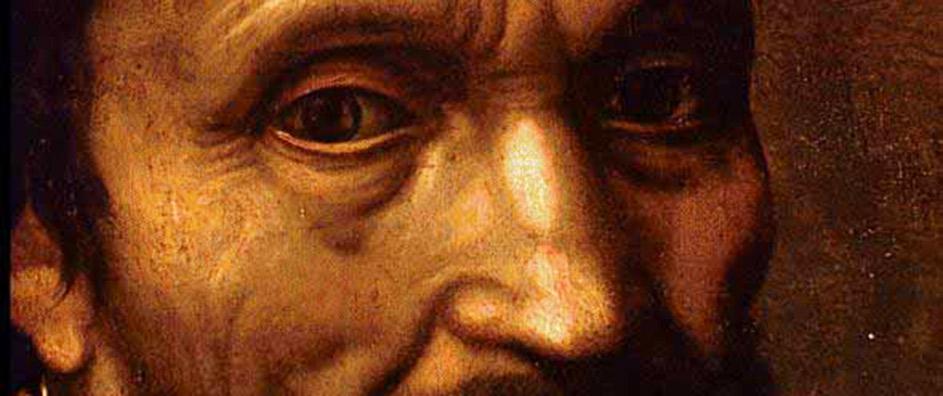In a world saturated with unrelenting haste and incessant noise, the image of a philosopher, poised in a moment of introspection while awaiting execution, encapsulates a profound juxtaposition between mortal fragility and transcendent reflection. The Bahá’í teachings, which emphasize the harmony between science and religion, elucidate the conundrum of human existence, the quest for meaning, and the essence of divine contemplation. This exploration unfolds through a vivid metaphorical landscape that resonates deeply within the Bahá’í framework.
At the apex of this poignant imagery lies the palpable tension between life and death. Awaiting execution serves as a metaphor for the human condition—an imminent confrontation with mortality. It compels individuals to grapple with existential questions that transcend ordinary experiences. What is the purpose of life? What does it mean to be in communion with the divine? Within this existential limbo, the philosopher embodies the quintessential seeker of truth, contemplating the nature of existence and the divine essence that binds all reality.
The Bahá’í perspective advocates for the necessity of such contemplation, encouraging followers to explore the depths of their spirituality while engaging with the complexities of the human experience. The philosopher’s plight encourages a synthesis of thought—a harmonious convergence between intellect and spirituality. This is echoed in Bahá’í scripture, which famously states that “the purpose of life is to know and love God.” In this light, the philosopher’s reflections may catalyze profound epiphanies that can illuminate both the self and the greater universe.
Furthermore, the imagery of awaiting execution evokes the concept of timelessness. Time, as a construct, often dictates the pace of human existence. However, in moments of contemplative reflection, one may step outside the bounds of chronological time and enter a realm of spiritual timelessness. The philosopher, trapped within the immediacy of their circumstances, paradoxically finds freedom in contemplation. As they reflect upon the metaphysical questions of life and humanity, they ascend to a higher understanding that resonates with Bahá’í principles of unity and oneness. This is a striking reminder of how moments of despair can yield clarity and insight, transforming suffering into spiritual refinement.
The philosopher’s internal dialogue can also serve as a microcosm of the collective human experience. Every individual, irrespective of their circumstances, faces moments of existential dread. The Bahá’í teachings, with their emphasis on community and interconnectedness, herald the essential truth that no one endures the path of life alone. The philosopher, while alone in their awaiting execution, symbolizes the universal struggle for understanding and solace in the face of adversity. The transparency of this shared experience encourages individuals to embrace their spiritually diverse journeys, fostering a sense of empathy and compassion in an often fragmented world.
In contemplating God while awaiting the finality of mortal existence, the philosopher invites an exploration into the nature of divine justice and mercy. This duality is intrinsic to Bahá’í thought, which asserts that God is both loving and just. The temporal punishment that the philosopher faces serves as a poignant reminder of the transient nature of human actions and the enduring implications of one’s choices. The philosopher’s thoughts, therefore, may traverse the terrain of accountability, ultimately leading to the realization of divine forgiveness and mercy that transcends mere earthly adjudications.
Moreover, the philosopher’s introspection invites a discussion on the role of suffering in the human experience. Often perceived solely as a detriment, suffering is recast within Bahá’í teachings as a catalyst for spiritual growth. The philosopher, in their final moments, may reflect on the multitude of life experiences—their triumphs and tribulations. Each moment contributes to their understanding of love, compassion, and the divine attributes of God. This integration of suffering into the broader narrative of existence fosters resilience and deepens one’s relationship with the divine, emphasizing the beauty of transformation through adversity.
Finally, the contemplation of God amidst uncertainty embodies a profound testament to faith. Faith, in a Bahá’í context, is not a passive acceptance of dogma; rather, it embodies an active engagement with the divine. The philosopher’s musings challenge those engaged in religious practice to cultivate a personal relationship with God, rich in inquiry and authenticity. Such a relationship transcends the mere recitation of prayers or adherence to rituals. It is an exploration that invites dialogue, wrestling with profound questions, and ultimately arriving at a unique understanding of God’s presence in everyday life.
In conclusion, the image of a philosopher awaiting execution serves as a rich metaphor within the framework of Bahá’í teachings. It encapsulates themes of mortality, introspection, divine contemplation, justice, mercy, suffering, and faith. Within this metaphor lies a powerful invitation for individuals to reflect upon their own journeys, to engage deeply with their spirituality, and to embrace the transformative potential inherent in life’s trials. Through such contemplation, one may find not only solace but a profound connection to the divine—a connection that reverberates across the tapestry of time, uniting individual souls in their shared quest for understanding and love.
